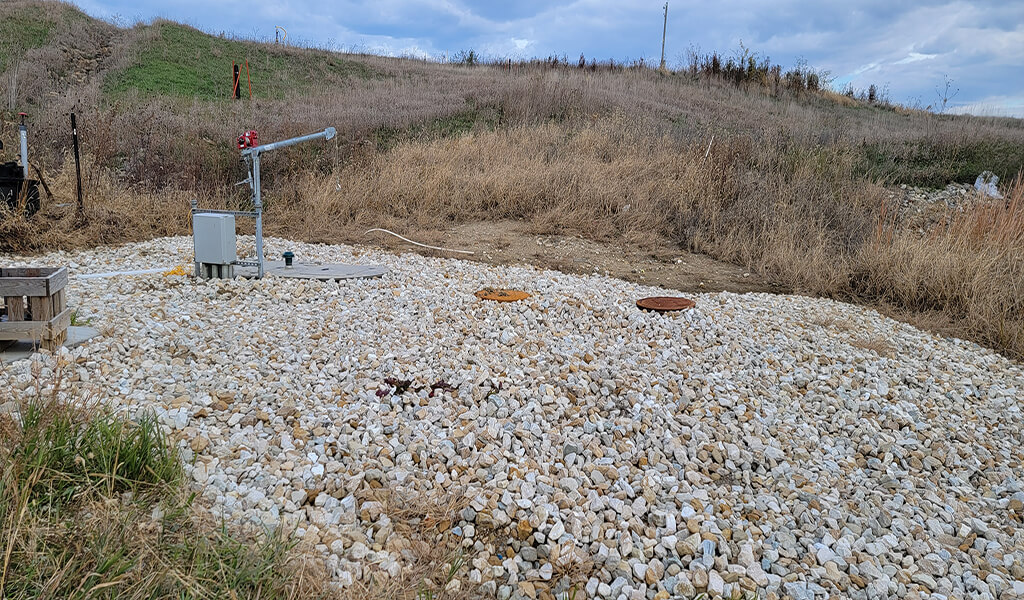
Improving Waste Management and Easing Economic Burden
For many years, the Des Moines County Landfill relied on the traditional yet costly method of trucking excess water that percolated through the landfill, commonly known as landfill leachate, off-site whenever its storage lagoons became full. Over the years, however, expenses related to leachate disposal at wastewater treatment plants increased, placing an untenable economic burden on the waste management facility.
As a potential solution, the Des Moines County Regional Solid Waste Commission (SWC) proposed a solution for the permanent leachate disposal at the West Burlington sewer system. Viewed as an option to lower taxpayer costs within the City of West Burlington, both parties consented to the agreement, and plans for the project were launched.
Managing Dual Client Representation for Leachate Disposal Solution
The Snyder & Associates team was hired to represent the city’s and the landfill’s needs throughout this project. When providing services for multiple parties, clear agreements and constant communication are vital to satisfactorily satisfy all needs. Since the city leaders agreed to construct the project for the landfill, we helped both clients navigate the process to enter a Chapter 28E agreement under the Iowa Code. This agreement allows cities to contract with other governmental units—in this case, the county landfill.
Additionally, to ensure the partnership was protected in the future, we prepared a substantial industrial use agreement between our clients for monitoring and reporting the characteristics of the leachate. Per this agreement, the landfill cannot exceed an average of 58,000 gallons of leachate disposal per day and has a maximum limit of 80 gallons per minute. The industrial use agreement also outlines specific parameters for contaminants such as cadmium, copper, lead, nickel, silver, BTEX, and benzene to ensure nothing harmful is conveyed to the West Burlington treatment plant.
Leachate Conveyance Route Options & Project Construction
With agreements in place, our team began preparing preliminary studies for various pumping alternatives and piping routes to establish the most economical yet agreeable solution for the conveyance needs. Alignment A offered a shorter route with fewer grade transitions but would require multiple permits to construct a utility within the state highway right-of-way. Alignment B featured a longer route but avoided private property and easement acquisitions. Despite the higher upfront construction cost, alignment B resulted in the cheaper option in the long run. The group unanimously selected alignment B, and the final designs were moved forward.

The force main will connect the landfill to West Burlington’s wastewater distribution system for leachate disposal.
For this project, we started by constructing the lift station at the landfill. The station’s location was pre-determined as the site had a previously placed utility hole that allowed pumping and the necessary access to power. This lift station was constructed as a submerged wet well lift station typical for transmitting wastewater flows.
Our team then transitioned the construction phase to installing piping sections, adding over 12,000 linear feet of 4-inch diameter, high-density polyethylene (HDPE) piping. This material was selected because it can be installed in longer sections than PVC. Since the project pathway runs through the public right-of-way, most of the construction could be done via open-cut installation. However, the pipe intersects an active railroad at one location, and trenchless installation was applied to limit disruptions.
In a client request, we added pipe access cleanouts every 500 feet along the segments. While this is typically unorthodox for force main because of the pressure pipe, access was needed along this long expanse of pipe for special cleaning due to the nature of the waste.
This mutually beneficial waste management project reduced landfill expenses, and the lower costs ultimately trickle back to the taxpayers. The Snyder & Associates team was proud to bring the city and the county’s needs to the contractor to facilitate the construction of a project that minimized environmental impacts, avoided wastewater treatment plant operation interruptions, and mitigated the disturbance to nearby neighborhoods.




